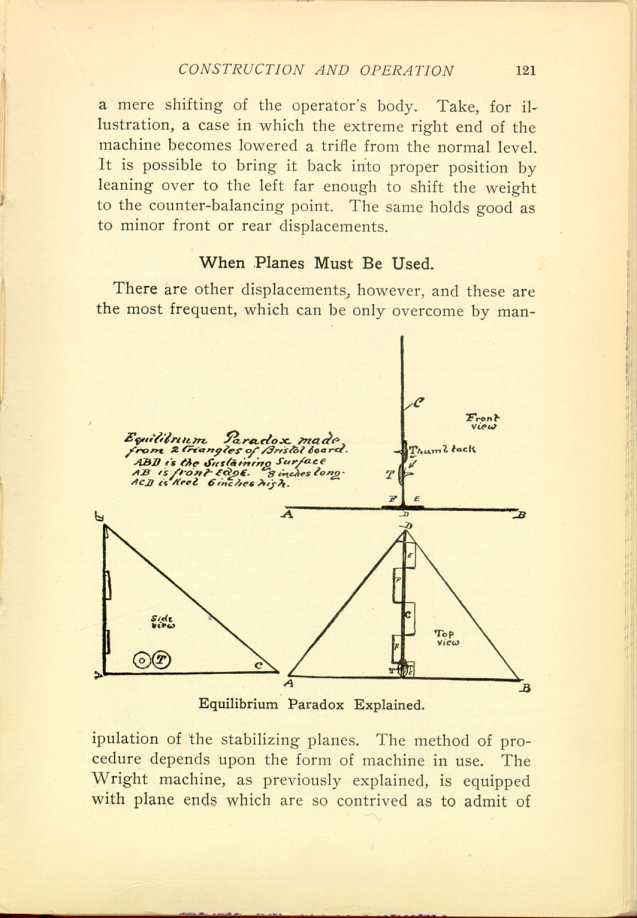| CHAPTER XII.
HOW TO USE THE MACHINE. Flying Machines: Construction and Operation: A Practical Book Which Shows, in Illustrations, Working Plans and Text, How to Build and Navigate the Modern Airship. | ||
When Planes Must Be Used.
There are other displacements, however, and these are
the most frequent, which can be only overcome by manipulation

Equilibrium Paradox Explained.
[Description: Black and white illustration: Diagram of equilibriam paradox.]
This may seem like a complicated system, but its workings are simple when once understood. It is by the manipulation or warping of these flexible tips that transverse stability is maintained, and any tendency to displacement endways is overcome. Longitudinal stability is governed by means of the front rudder.
Stabilizing planes of some form are a feature, and a necessary feature, on all flying machines, but the methods of application and manipulation vary according to the individual ideas of the inventors. They all tend, however, toward the same end—the keeping of the machine perfectly level when being navigated in the air.
| CHAPTER XII.
HOW TO USE THE MACHINE. Flying Machines: Construction and Operation: A Practical Book Which Shows, in Illustrations, Working Plans and Text, How to Build and Navigate the Modern Airship. | ||